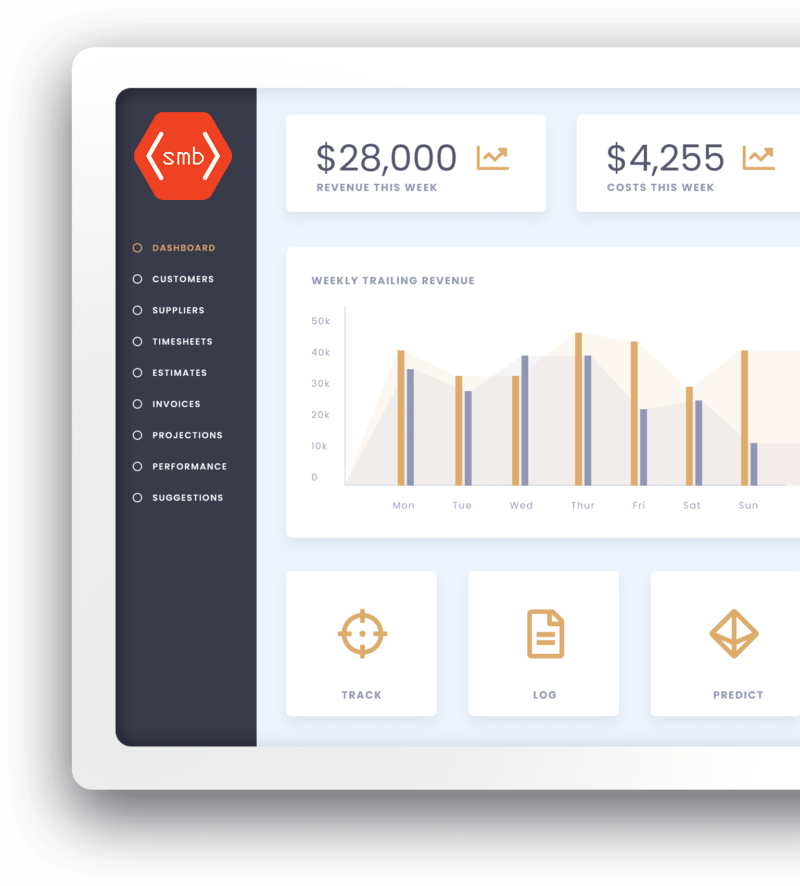
Welcome to the Heart of Modern Business Strategy
In the dynamic landscape of today’s business world, where customer preferences and market trends shift like the tides, one element remains steadfast at the core of successful enterprises: Customer Relationship Management (CRM). It is not just a tool or a technology but a strategic compass guiding businesses toward sustained growth and customer loyalty. This blog aims to unravel the intricate web of CRM, focusing specifically on the pivotal role of setting clear and compelling CRM objectives for customer-centric growth.
The Essence of Customer-Centric Growth
At the heart of a robust CRM strategy is customer-centric growth. This philosophy transcends traditional business models, placing the customer not just as an endpoint but as the central axis around which all business activities revolve. It’s about understanding and anticipating customer needs, crafting experiences that resonate and engage, and building relationships that endure. In this era of heightened competition and ever-evolving customer expectations, adopting a customer-centric approach is not just beneficial; it’s essential for survival and success.
In this journey through the realms of CRM, we will explore the nuances of setting objectives that align seamlessly with your business goals and resonate deeply with your customers’ expectations. We will delve into why customer-centricity is more than a buzzword in the modern business lexicon-it’s a strategy that can propel companies to new heights. From defining what constitutes practical CRM objectives to measuring the success of these objectives, this blog will provide a comprehensive guide to harnessing the power of CRM for customer-centric growth.
So, let’s embark on this enlightening journey together, uncovering the secrets to setting clear CRM objectives that align with your business goals and amplify your customers’ voices, shaping memorable and meaningful experiences.
Stay tuned as we dive deep into the world of CRM, where every strategy, tool, and objective is a step towards building stronger, lasting relationships with your customers, fueling profitable, sustainable, and customer-focused growth.
The Foundation of CRM Objectives
Defining CRM Objectives
In the vast ecosystem of Customer Relationship Management, the objectives serve as the guiding stars. CRM objectives are more than mere targets; they are the strategic milestones that dictate how a business interacts with its customers, shapes customer experiences, and aligns its internal processes toward customer satisfaction and loyalty. These objectives define the ‘what’ and ‘why’ of your CRM initiatives, setting the direction and tone for every interaction with your customers.
Think of CRM objectives as the DNA of your customer relationship strategy. They are crafted to meet immediate sales goals and foster long-term relationships. They should encompass various facets of customer engagement, from enhancing customer service to personalizing marketing efforts and streamlining the sales process. Essentially, they are the blueprint from which customer-centric business cultures are built.
Aligning Objective with Business Goals for Customer-Centric Growth
One critical aspect of CRM objectives is their alignment with the overarching business goals. This synergy ensures that every customer interaction is not a fleeting engagement but a step towards achieving broader business outcomes. CRM objectives should be in lockstep with these goals, whether it’s increasing market share, enhancing brand reputation, or driving sustainable growth.
To illustrate, if a business aims to expand into new markets, its CRM objectives could include understanding customers’ needs in these markets and tailoring services to meet those needs. If the goal is to enhance brand loyalty, the objectives might focus on creating more personalized customer experiences or implementing loyalty programs.
Aligning CRM objectives with business goals also ensures that resources are optimized. By focusing on the areas that contribute most significantly to the company’s overall objectives, businesses can allocate their time, budget, and efforts more effectively, resulting in a more streamlined, efficient, and impactful CRM strategy.
In conclusion, the foundation of CRM objectives lies in their ability to encapsulate the essence of customer relationships while synergizing with the larger business vision. They are the strategic compass that guides businesses in navigating the complex and ever-changing landscape of customer relations, ensuring every step taken is a step towards growth, both for the customers and the business itself.
The Power of Customer-Centricity
Importance in Today’s Business Environment
In the current business epoch, customer-centricity is not just a strategy; it’s a necessity. The power of placing the customer at the center of your business universe cannot be overstated. It’s about seeing your business through the eyes of your customers and shaping your products, services, and experiences to meet their needs and exceed their expectations.
Why is this approach crucial? Today’s consumers are more informed, connected, and empowered than ever before. They have a world of options at their fingertips and can easily switch loyalties if they feel undervalued or misunderstood by a brand. In this context, customer centricity becomes the key differentiator to set a business apart in a crowded market. It’s not just about selling a product or service; it’s about building relationships, fostering trust, and creating value that resonates with the customers personally.
Real-World Examples of Customer-Centric Growth
The most compelling evidence of the power of customer-centricity comes from real-world examples. Let’s consider a few cases:
- Amazon: Often hailed as the epitome of customer-centricity, Amazon has revolutionized the retail experience. From personalized recommendations to its seamless return policy, every aspect of Amazon’s strategy is designed with the customer in mind. This relentless focus on customer satisfaction has garnered a loyal customer base and driven the company’s extraordinary growth.
- Apple: Apple’s success story is rooted in its ability to understand and anticipate customer needs. By focusing on designing intuitive and user-friendly products, Apple has created a loyal community of users. Their approach goes beyond selling products; they sell experiences, and this philosophy has made them a dominant player in the tech industry.
- Zappos: This online shoe and clothing retailer has set a benchmark in customer service. Zappos’ customer-centric culture is reflected in its 365-day return policy and exceptional customer service. This commitment to customer satisfaction has been instrumental in their success and growth.
These examples underscore a vital lesson: businesses that prioritize customer needs and continuously adapt to serve them better survive and thrive. They create a loyal customer base that becomes their most significant asset in driving growth and sustainability.
In essence, the power of customer-centricity lies in its ability to transform customers from mere buyers into loyal advocates for your brand. It’s about creating a business model where the customer’s success becomes your success, leading to a symbiotic relationship that fosters growth and drives innovation.
Setting Clear CRM Objectives
The Necessity of Clarity in CRM Objectives
In the intricate dance of Customer Relationship Management (CRM), clarity in objectives is not just beneficial; it’s imperative. Unclear or ambiguous objectives can lead to misaligned efforts, wasted resources, and missed opportunities. In contrast, clear and well-defined CRM objectives provide a focused direction for your customer engagement strategies and decision-making processes.
Consider CRM objectives as your navigational tools in the vast ocean of customer relationships. Just as a ship’s captain needs a clear destination to set the course, businesses need well-defined CRM objectives to guide their interactions with customers and ensure that every effort contributes meaningfully towards their overarching goals.
Applying the SMART Criteria
To ensure that CRM objectives are clear and effective, they should be framed using the SMART criteria:
- Specific: Objectives should be clear and specific, leaving no room for ambiguity. Instead of a broad objective like ‘improve customer satisfaction,’ a specific objective would be ‘increase customer satisfaction ratings by 10% within the next 12 months.’
- Measurable: Each objective needs to have criteria for measuring progress and success. This could be quantitative metrics like sales figures or qualitative measures like customer feedback.
- Achievable: Objectives should be realistic and attainable. Setting overly ambitious goals can lead to frustration and demotivation, while too easy goals might not drive sufficient improvement.
- Relevant: The objectives should align with the broader goals of the business and be relevant to the current market conditions and capabilities of the organization.
- Time-bound: Each objective should have a clearly defined timeline. This instills a sense of urgency and helps in planning and prioritization.
Examples of SMART CRM Objectives
Let’s consider some examples of SMART CRM objectives:
- Increase Customer Retention: Instead of a vague goal like ‘improve customer loyalty,’ a SMART objective would be ‘increase customer retention rate by 15% over the next 18 months by implementing a customer loyalty program and enhancing post-purchase support.’
- Enhance Customer Engagement: A specific objective could be ‘to increase customer engagement on our social media platforms by 25% within the next six months through interactive content and responsive communication.’
- Improve Response Time: Rather than a broad objective of ‘enhancing customer service,’ a more targeted goal would be to ‘reduce average customer service response time to under 2 hours by the end of the quarter through staff training and improved customer service software.’
By setting Specific, Measurable, Achievable, Relevant, and Time-bound objectives, businesses can create a clear roadmap for their CRM strategies. This clarity enables efficient resource allocation and ensures every customer interaction is purposeful and aligned with the organization’s broader vision.
In sum, setting clear CRM objectives is a critical step in creating effective and impactful customer relationship strategies. It’s about clearly defining where you want your customer relationships to go and setting a practical and measurable path to get there.
As we conclude Part 1 of our journey into Unlocking Customer-Centric Growth, we’ve only scratched the surface of setting clear and actionable CRM objectives. Are you ready to dive deeper and tailor a CRM strategy that resonates with your business ethos and customer expectations?
Don’t let the complexity of CRM objectives become a roadblock to your company’s growth. SMB Dynamics is here to help you fine-tune your strategy, just like a skilled mechanic bringing a powerful engine to life. Reach out to us, your CRM Mechanics, and let’s craft a CRM blueprint that drives your business forward into a future of customer-centric success.
Connect with SMB Dynamics Now — and gear up for the next leap in customer-centric growth!
Stay tuned for Part 2, where we’ll venture into implementing and aligning your CRM objectives for maximum impact.



